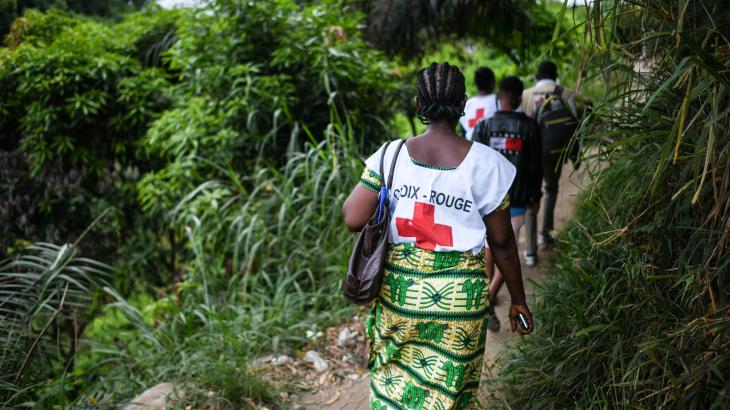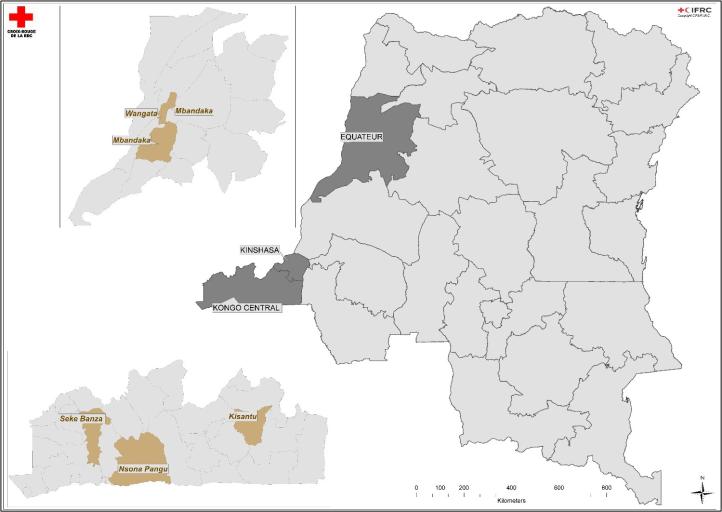Dates of implementation: 2018 - present
Settings: Mixed
Context: Preparedness/ scale-up in emergencies
Data collection system: Started with paper/Excel reporting system and transitioning to Nyss in 2024/2025
Partners: USAID, International Federation of Red Cross and Red Crescent Societies, French Red Cross
The Democratic Republic of Congo (DRC) has a long history of infectious disease epidemics due to a variety of factors, including tropical climate, dense forests, limited healthcare infrastructure and socio-political instability.
DRC is prone to recurrent epidemics that require emergency assistance to minimize mortality and morbidity. These epidemics include cholera, measles, yellow fever and mpox. Additionally, the country has reported 12 outbreaks of Ebola Virus Disease, affecting 10 of the DRC's 26 provinces.
Tackling these challenges requires a multi-faceted approach, including strengthening healthcare infrastructure, improving surveillance and response systems, reinforcing public health education and encouraging international cooperation and support.
In response to these challenges, the DRC Red Cross has been working to empower communities to prevent the spread of diseases in the provinces of Kinshasa and Kongo Central since 2018, expanding to Equateur province in 2023. The organization collaborates with the government, communities, local stakeholders, and humanitarian partners to collectively prepare for and respond to epidemics. Community-based surveillance is a key focus of the DRC Red Cross's work.
Through an extensive network of volunteers, the DRC Red Cross provides essential information and referrals, in coordination with the Ministries of Health, Agriculture and Fisheries, and Livestock, to help stop diseases from spreading before an outbreak occurs. This involves community education through door-to-door visits, activities in schools, and group discussions, as well as strengthening community health referral systems and engaging and training influential individuals in the community, such as teachers, chiefs, and traditional healers.
In addition to community-based surveillance, the DRC Red Cross also focuses on preparing first responders and stakeholders. This includes developing multi-hazard response plans, strengthening infection prevention and control (IPC) in Red Cross health facilities, and training and preparing volunteers and staff.
| Human-related health risks | Animal-related Health Risks |
| Acute watery diarrhea | Rabies |
| Measles | Group of unusual illness or death in animals |
| Yellow Fever | |
| COVID-19 | |
| MPox | |
| Viral Hemorrhagic Fever | |
| Unusual group of illness or death in people Maladies |


